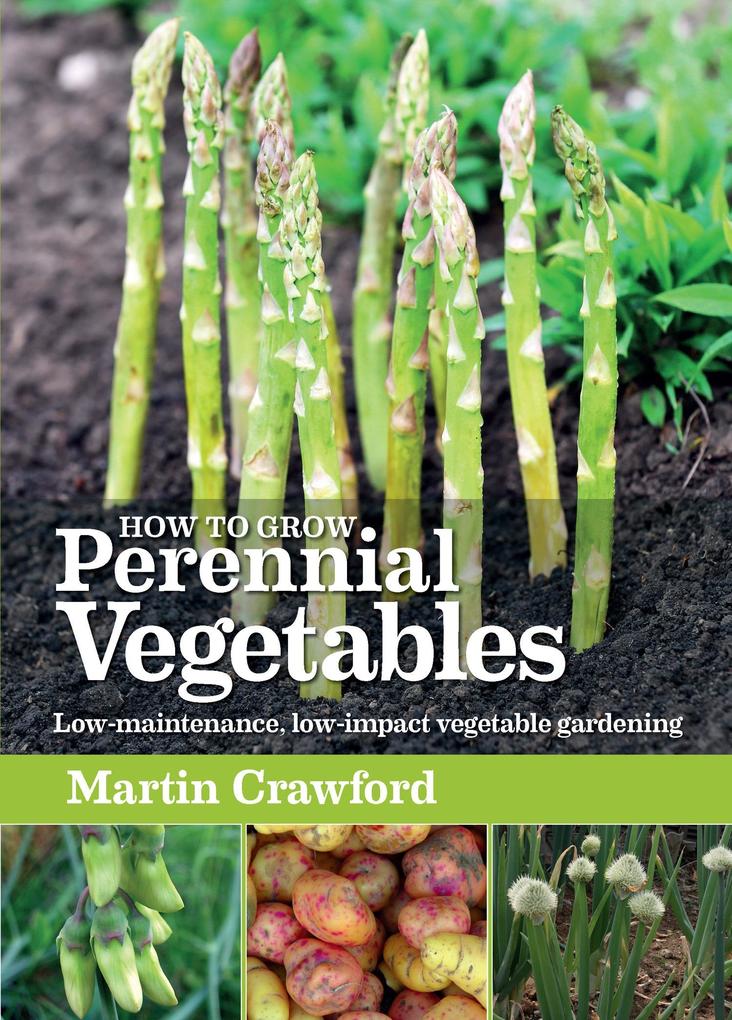
Sofort lieferbar (Download)
How to Grow Perennial Vegetables gives comprehensive advice on all types of perennial vegetables, from ground-cover plants and coppiced trees to plants for bog gardens and edible woodland plants.
Perennial vegetables are a joy to grow. Whereas traditional vegetable plots are largely made up of short-lived, annual vegetable plants, perennials are edible plants that live longer than three years. Grown as permaculture plants, they take up less of your time and effort than annual vegetables, and extend the harvesting season - avoiding the hungry gap between the end of the winter harvest and the start of the summer harvest of annual vegetables.
Unlike annual vegetables, perennials cover and protect the soil all year round, which maintains the structure of the soil and helps everything growing in it. Humous levels build up, nutrients don't wash out of the soil, and mycorrhizal fungi, critical for storing carbon within the soil, are preserved. Perennial plants also contain higher levels of mineral nutrients than annuals because they have larger, permanent root systems, capable of using space more efficiently
Written by gardening expert Martin Crawford, this book gives comprehensive advice on how to grow and care for both common perennial vegetables like rhubarb, Jerusalem artichokes, horseradish and asparagus and unusual edible plants such as skirret, red chicory, nodding onions, Babington's leek, scorzonera, sea kale, wild rocket, coppiced trees and aquatic plants.
With plenty of cooking tips, colour photographs and illustrations throughout and an A-Z of over 100 perennial edibles, it is an inspiration for all gardeners.
Perennial vegetables are a joy to grow. Whereas traditional vegetable plots are largely made up of short-lived, annual vegetable plants, perennials are edible plants that live longer than three years. Grown as permaculture plants, they take up less of your time and effort than annual vegetables, and extend the harvesting season - avoiding the hungry gap between the end of the winter harvest and the start of the summer harvest of annual vegetables.
Unlike annual vegetables, perennials cover and protect the soil all year round, which maintains the structure of the soil and helps everything growing in it. Humous levels build up, nutrients don't wash out of the soil, and mycorrhizal fungi, critical for storing carbon within the soil, are preserved. Perennial plants also contain higher levels of mineral nutrients than annuals because they have larger, permanent root systems, capable of using space more efficiently
Written by gardening expert Martin Crawford, this book gives comprehensive advice on how to grow and care for both common perennial vegetables like rhubarb, Jerusalem artichokes, horseradish and asparagus and unusual edible plants such as skirret, red chicory, nodding onions, Babington's leek, scorzonera, sea kale, wild rocket, coppiced trees and aquatic plants.
With plenty of cooking tips, colour photographs and illustrations throughout and an A-Z of over 100 perennial edibles, it is an inspiration for all gardeners.
Inhaltsverzeichnis
Foreword by Hugh Fearnley-Whittingstall Introduction Part 1 An introduction to perennial vegetables 1. Why grow perennial vegetables? What is a perennial vegetable? The case for growing perennials 2. Growing perennial vegetables Types of perennial plant Soils Perennial beds Planting patterns Perennial polycultures Perennial grains Perennial tuber and root crops Perennial vegetables and ground-cover plants Forestgardens Growing perennial vegetables under existing trees Growing aquatic perennial vegetables Native and non-native plants 3. Maintenance of perennial vegetables Feeding Soil pH Disease management Pestmanagement Harvesting and yields Propagation Maintenance Part 2 Perennial vegetables A-Z Appendix: Common and Latin names Resources
Produktdetails
Erscheinungsdatum
05. Juli 2012
Sprache
englisch
Seitenanzahl
224
Dateigröße
7,06 MB
Autor/Autorin
Martin Crawford
Verlag/Hersteller
Kopierschutz
mit Adobe-DRM-Kopierschutz
Produktart
EBOOK
Dateiformat
EPUB
ISBN
9780857840943
Entdecken Sie mehr
Pressestimmen
"This lovely book makes it clear that we are not just missing a trick, we are missing a feast." -- Hugh Fearnley-Whittingstall "I admire tremendously the first-hand experience which informs Martin Crawford's writing. This book leads us down the path to a wealth of perennial vegetables and tells us how to combine them successfully." -- Anne Swithinbank "A really useful book... Let us start freeing outselves from the tyranny of the annual sowing, thinning and planting regime." -- Bob Flowerdew "At last an indepth book on perennial vegetables combined with Martin Crawford's usual diligence of research - essential reading." -- Ben Law "A lot of information is packed into a relatively short space... Lots of the plants listed were new to me entirely, or as an edible possibility. Now I'm not only thinking where edible perennials may fit on my allotment, but also in my garden too! This is an informative and detailed book, which I shall be returning to again and again." vegplotting.blogspot
Bewertungen
0 Bewertungen
Es wurden noch keine Bewertungen abgegeben. Schreiben Sie die erste Bewertung zu "How to Grow Perennial Vegetables" und helfen Sie damit anderen bei der Kaufentscheidung.







